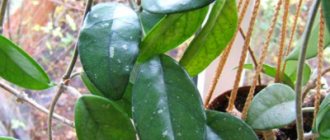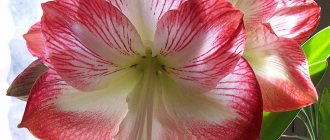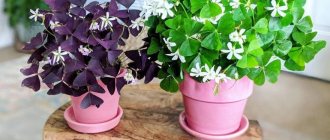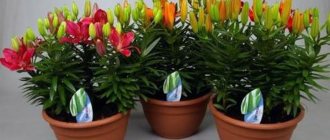Zantedeschia ethiopica is a plant that has white flowers; people often call it white calla. Comes from the Araceae family. The place of origin is South Africa, where the flower prefers to exist in humid areas, near ponds and swamps. It is normal for the rhizome and part of the stem to be completely or partially in water.
Calla is a perennial plant. The leaves are large, basal, heart-shaped, dark green in color, with wavy edges. On the long arrow there is a spadix - a yellow inflorescence. White, tubular, expanding closer to the top - this is a blanket, not the flower itself. In the photo you can see different types of this flower.
Types and varieties of Zantedeschia
There are two more types of calla lilies:
- Elliott - the main feature is the yellow color of the bract;
- Remana - different in pink color.
Varieties descended from different species do not have the same underground part. Branched rhizomes in plants, the basis of which was Ethiopian calla, but underground compactions - tubers - in Elliot's descendants.
The most famous varieties of Zantedeschia alba:
- Nicolai – peduncle, size one and a half meters. The coverlet underneath is green on the outside;
- Pearl is a variety that does not grow high, a maximum of half a meter. Suitable for growing in flowerpots;
- Schone Zweibruckerin – peduncle up to 1 m, leaves are light, the bottom of the spathe is dark green;
- Green Goddess - stunning, magnificent calla lilies, growing up to 90 cm.
General growing rules
Wherever you plant them: at home in a pot or at the dacha, you need to remember a few points:
- Shallow planting is required, the rhizome is barely covered with soil;
- until the root system is formed, the calla lilies will not sprout, this can last about a month;
- be extremely careful when digging - the tubers can easily be damaged;
- you can predict rain by using a calla lily: droplets of water appear on it if bad weather is about to happen;
- the pot must be porous, it cannot tolerate any other plants in the same pot;
- sometimes the top layer needs to be carefully removed and replaced with fresh substrate.
Features of plant growth and propagation
The flowering process is quite long, from autumn to spring. The first flowers may be greenish, but with age their color becomes richer and brighter. For wonderful flowering at home, the plant needs a period of rest - about a month and a half, everything is very individual, depending on the conditions and care.
Once Zantedeschia turns two or three years old, it is necessary to start rejuvenating it. After all, due to the fact that the root grows, the flower may wither. The necessary actions are dividing and planting the rhizomes. Zantedeschia is very popular as a houseplant because it is easy to care for and its needs can be fully met at home. The permissible growing location is not limited to an apartment or a house, since the characteristics of calla lilies are such that they can be planted in open ground for the summer
The fact that the juice of representatives of the Araceae genus contains a proportion of a toxic substance deserves special attention. When performing any actions with the plant, you need to wear rubber gloves. Afterwards, you must wash your hands thoroughly with soap. It is important to limit access to the flower for children and pets.
Conditions for growing Ethiopian calla lilies
Illumination
To grow zantedeschia, choose a well-lit place: a windowsill facing east or west. A south-facing window may suffer from direct sunlight, and the substrate dries out quickly. In autumn and winter, the length of daylight hours is reduced, but Zantedeschia adapts to such lighting.
Air temperature
The temperature required is moderately warm, the optimal value is 18 °C. During the warm season, the plant will adapt to a temperature range of 20-23 °C; in winter, the thermometer should not fall below 12 °C.
Growing Zantedeschia at home
How to grow? Care? Basic home care items must be followed:
- Lighting. An important factor, sunlight is needed in summer and winter. It gets used to any environment; in summer you should not place the flowerpot on the south side - it threatens to dry out the soil.
- Temperature conditions. Calla loves warmth. For proper development, it is important to ensure a temperature above 18°C; 22-25°C would be ideal. Protect from drafts and changes.
- Humidity. Constant spraying and washing of leaves is necessary. Able to grow at room humidity, if you want it to be healthy, increase the amount of moisture.
- Watering. The stage of active growth - moderate the amount of fluid intake. Spring-autumn is the time of flowering - the time of abundant watering. During the dormant period, watering should again be reduced to moderate. The water should be warm at room temperature.
- Fertilizer. During the hour of growth and flowering, the flower needs fertilizing with fertilizers created for flowering plants; with the help of nitrogen agents you will simply improve the growth of leaves.
- Transfer. The pot in which you are going to plant calla lilies should be large and spacious. It is necessary to have drainage so that the water does not stagnate and the rhizome does not rot. Transplantation should be carried out regularly once a year. The tuber should be about 5-10 cm deep in the ground. If you are going to buy it in a store, you may have difficulty determining the bottom and top. To do this, soak it in a growth stimulator and place it in a dark, damp place for several days - this way you can see where the stem is growing from.
- Rest period. Time after the active flowering phase. It is characterized by the fact that the part of the plant located above the ground dries out. It is important to reduce watering, or almost stop. Cleaning of dry leaves and replanting into new soil occurs in mid-summer. One and a half months is a suitable period for rest.
- The soil. Regular soil is not suitable for growing calla lilies at home. For proper care, you need to buy a store-bought special substrate created for plants of the Araceae family. You can do it yourself. In short, you will need turf, leaf, peat, humus soil, and sand.
Basic content rules
@ Alisa stock.adobe.com In order for the plant to bloom magnificently, you need to remove the shoots
For ease of use, the basic rules of content are summarized in the following table.
| Temperature | A heat-loving plant that reacts negatively to sudden temperature fluctuations. |
| Air humidity | Increased, the plant needs to be sprayed and given a warm shower. |
| Lighting | Requires sunlight, with the exception of direct sunlight. |
| Watering | It is moisture-loving and does not respond well to soil drying out. |
| Priming | Loose and nutritious. A ready-made mixture is suitable for flowering plants. |
| Feeding | They are carried out regularly during the period of active growth and flowering. |
| Bloom | Occurs once a year if proper care is provided. |
| Transfer | For young plants - annually. Adult specimens can be replanted once every 2 years. |
| Trimming | Removing young “babies” promotes lush and long-lasting flowering. |
| Rest period | Provided by reducing watering, lasts 1-2 months. |
Next, we will consider in more detail the basics of proper maintenance of zantedeschia at home.
Find out detailed information about growing calla lilies at home from the following video.
Temperature
Zantedeschia requires warmth for normal development. It is recommended to keep it at a temperature ranging from 20 to 25 degrees. Keep in mind that the culture tolerates a slight decrease in grades better than an increase. Short-term frosts can cause the death of young leaves, but will not kill the plant itself.
You should not place calla lilies on the windowsill, especially if ventilation is carried out regularly. Any draft is detrimental to the root system of the plant. You should not place the flowerpot next to heating appliances. They dry out the air in the room, which will cause the plant to suffer.
Air humidity
@ linjerry stock.adobe.com Calla lilies are often used in interior design
This indicator can be maintained at the required level through constant spraying. During the summer, the procedure should be carried out at least once a day. It is useful to wash the leaves with warm water; this can be done with a shower.
Attention! Dry air is especially detrimental to plants in winter, after turning on the heating devices. It is best to install a tray with water next to it, this will save the owner from the hassle of care.
Soil moisture
In nature, Zantedeschia grows in swamps and loves high humidity. At home, these requirements remain unchanged - calla lilies need regular watering, especially in warm weather. It is necessary to use water at room temperature for irrigation, which must be settled.
The soil mixture should be moderately moist, excluding overwatering. Excessive moisture can cause the death of the plant due to damage to the root system. The accumulation of moisture in the pan is unacceptable; water must be drained from it regularly.
Starting from mid-summer, watering is gradually reduced. In winter, the plant is watered only when the room temperature exceeds 22 degrees.
Lighting
@ Peter stock.adobe.com In summer, it is recommended to plant zantedeschia in open ground
Culture is not as demanding on this parameter as on the previous ones. It is able to tolerate exposure to sunlight and tolerates partial shade. Calla lilies will grow and develop in any conditions, but flowering can only be achieved by creating optimal daylight hours. It is best to place a pot of Zantedeschia on a windowsill with a southern orientation.
Additional fertilizing
Like all plants, zantedeschia requires fertilizing during the period of active growth and flowering. By providing it with sufficient nutrition, the formation of strong foliage and flower stalks can be achieved. It is best to use mineral complexes with a low nitrogen content in the composition. This component is good for decorative deciduous crops. It ensures the formation of juicy and rich green mass, but reduces the likelihood of flowering.
@ linjerry stock.adobe.com Orange calla lily is considered rare
To set flower buds, you need to use compounds with a high content of potassium and phosphorus. Feeding should be done once every two weeks.
Transfer
Calla is characterized by rapid growth, therefore it requires its owner to carry out transplants annually or once every 2 years. This is also necessary to provide the crop with all the necessary nutritional components.
@ xuanhuongho stock.adobe.com A bouquet of white callas is considered a symbol of love and fidelity
Attention! The optimal time for transplantation is early spring or October.
The pot should not be much larger than the previous one. Small holes should be made in its bottom, which are covered with expanded clay. The rest of the area is filled with light soil mixture. The plant is planted in a new pot with fresh soil and immediately watered with warm water.
In the first days after transplantation, the plant does not need to be exposed to the sun. It is better to provide him with moderate maintenance for speedy adaptation.
Reproduction process
Rhizome division is the method by which Zantedeschia reproduces. This happens after the end of the rest period. The shoots that appear on the sides are separated from the mother and planted in low pots. Instructions with videos and photos can help if you are a beginner in floriculture.
They should not be watered too much to prevent rotting. After the first leaves appear, the amount of water should be gradually increased, while simultaneously starting to feed the plant with fertilizers.
Caring for indoor callas
It is no coincidence that Zantedeschias are considered difficult plants to grow. They are very demanding of humidity, fertilizing during the period of active growth and need constant attention.
Watering and air humidity
A drop or excess of the usual humidity of the substrate is unacceptable for Zantedes. The soil should be constantly moist with only the top of the substrate drying out. During the period after flowering, watering is reduced to minimum humidity (1 watering every 7-10 days). During the dormant period, watering is stopped completely.
To enter the active growth stage, indoor callas are first watered with a minimum amount of water approximately once a week. They focus on the beginning of the growth of new leaves and shoots, as a signal to increase watering to abundant watering.
Zantedeschias should be watered carefully, without soaking the tuber. For the plant, you can use bottom watering and all automatic watering methods. Water the zantedeschia with warm, soft water.
Zantedeschias bloom more beautifully the higher the air humidity. For them, it is better to install humidifiers (devices or containers with water and pebbles); in summer, the leaves of the plant can be regularly sprayed with warm water.
Top dressing and fertilizer composition
Fertilizers for the plant are applied only in liquid form. During the dormant period, Zantedeschias are not fed. During the period of growth and flowering, they need enhanced feeding, allowing the huge leaves and inflorescences to develop normally.
For Zantedes, weekly fertilizing with half the concentration of fertilizers or standard procedures once every 2 weeks is preferable. Fertilizers for Aroid or flowering plants are suitable for them. But you can apply complex fertilizers at the beginning of growth, and potassium-phosphorus fertilizers from the moment the flower stalks develop.
Zantedeschia elliottiana
Pruning and shaping zantedes
Dry, damaged, and during the period of active growth and flowering, yellowing leaves of calla lilies should be carefully trimmed.
In indoor calla lilies, shoots are often pruned to ensure more abundant flowering of the main plant.
Transplantation, containers and substrate
Zantedes can be replanted both after flowering and after the end of the dormant period. Callas are grown in a slightly acidic, peat-containing, nutritious substrate. Special substrates for Aroids or peat-compost soil mixtures are preferred.
For Zantedes, it is important to choose stable containers, because when they grow, large leaves and shoots often outweigh the container. If the varieties are tall, you can install additional support for the inflorescences.
Zantedeschias are replanted carefully, removing them from the substrate, inspecting and cleaning old and dried roots. A high layer of drainage is laid at the bottom of the containers. When planting Zantedes, it is important to ensure that the growing points remain on the surface and the tubers are not too deeply buried.
Diseases and pests that threaten Zantedexia
There are two reasons for the poor appearance of a plant grown at home:
- The end of the life cycle, which is natural, leaves turn yellow (the process of preparation for the dormant period);
- Improper care at home - drying out of leaf tips from lack of moisture.
A small amount of moisture causes almost all problems, even damage from spider mites or aphids. To avoid trouble or cure zantedexia, proper care is necessary: keep it clean, water it with enough water, spray it, wipe the leaves with a soap solution, and then rinse it in the shower. If the pest infestation is very severe, you can buy a special product and use it until the problem disappears completely; it is better to use it during the dormant period.
Even in any photo it is noticeable that calla lilies are the standard of elegance and grace among flowers. What is important is that it does not require any supernatural care at home.
Transplantation and dormant period of Ethiopian calla lilies
How to plant Zantedeschi tubers photo
When the flowers on the plant begin to dry out, stop feeding and reduce watering, preparing for replanting and a dormant period. When the last flower falls, do not water at all.
- Replant in June-July, when there are no more flowers and the leaves also begin to die.
- Remove the plant from the pot, shake off the earthen lump, cut the leaves and flowering stems to the root.
- Take a spacious pot (diameter 20 cm and height 60 cm), lay drainage (pebbles, expanded clay, pebbles) about 4 cm thick on the bottom, add earth, place the plant in the center and add substrate, press slightly at the surface.
- The soil required is nutritious, loose, it is prepared on the basis of 2 parts of turf soil, also add one part each of peat, humus, leaf soil and sand.
After transplanting, place it in a bright place; it is advisable to maintain the temperature at first at 10 °C, then increase it to 15 °C. Water minimally. The appearance of new leaves indicates the end of the dormant period - then increase watering, and you can start feeding.











